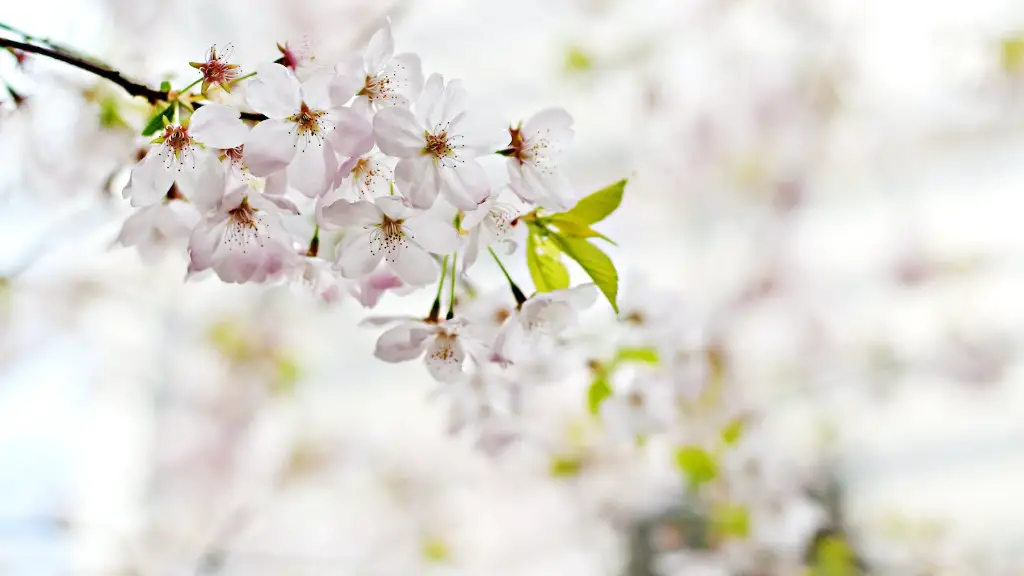Environmental Stress
The leaves on a cherry tree can turn brown for many reasons, although environmental stress is often a factor. When environmental stress occurs, leaves can become dehydrated, leading to leaf scorch and eventually, brown patches. Heat and wind can both result in dehydration, while water-logged soil can lead to a lack of oxygen uptake by the tree’s roots, reducing the availability of water and nutrients to the branches and leaves. Spells of extremely low temperatures or infestations of pests such as aphids can also create an environment where the stress is too much for the tree’s leaves to handle.
Checking for Soil Conditions
To understand why leaves on a cherry tree turn brown, it’s important to check for soil conditions in the area of the tree. Having enough moisture available, especially during the warmer months, is critical for a healthy tree, and not enough water can lead to dehydration which leads to early signs of leaf browning. To ensure adequate moisture is available, soil should be checked to make sure it is not water-logged, which can lead to the same issues. If the soil is water-logged roots may not be able to take in oxygen, and this can reduce the availability of both water and nutrients to the branches and leaves.
Plant Pests
Infestation by pests, such as aphids, can also cause cherry tree leaves to turn brown. These insects feed on sap from the leaves, which can lead to defoliation and eventual browning. To combat the problem of plant pests, it’s important to inspect the tree regularly, ideally once a month or so. If pests are noticed it’s important to take swift action, as research suggests that even moderate infestations can lead to problems with leaf browning. There are many over-the-counter pest-control products available, and more natural alternatives such as neem oil.
Fungal and Bacterial Diseases
Fungal and bacterial diseases can also cause leaves on cherry trees to turn brown. Powdery mildew is a common cause, and is caused by lack of air circulation and too much humidity. This can often be combated by pruning the branches of the tree to increase air circulation, and careful application of fungicide can be effective in controlling the spread of the disease. Bacterial canker is another common problem, and is caused by a bacteria that enters through wounds in the bark caused by pruning or other injuries. To treat this, it’s important to keep the tree properly pruned and to remove any dead branches and leaves.
Fertilizer and Proper Pruning
A final cause of leaf browning on cherry trees can be due to lack of nutrients in the soil. To combat this, it’s important to make sure the tree is receiving adequate fertilizer. The amount of fertilizer required will depend on the species of the tree, so it’s best to consult with a local garden centre or arborist before applying. It’s also important to regularly prune the tree to maintain structure, especially if it is exhibiting signs of stress. Pruning should always be done with care in order to avoid wounding the tree, as this can provide an entry for disease.
Warm Weather Stress
When leaves on a cherry tree begin to turn brown, it’s important to first consider environmental stress as a factor. Heat and drought can both contribute to leaf scorch, leading to brown discolouration of the leaves. To ensure the tree is receiving adequate moisture and nutrients, soil should be checked regularly, and consideration should be given to any pests or diseases that could be causing the issue. Pruning should be done carefully in order to avoid any potential wounds, and fertilizer application should be done with consideration of the species of the tree.
Heat and Drought
Heat and drought are two of the most common causes of leaf browning on cherry trees, and proper management of the tree’s environment is vital in order to counteract the stress. Make sure to water at least once a week when temperatures are high, especially if the tree is in a container. It’s also important to make sure the soil is not water-logged, as this can cause even more stress on the tree. Mulching around the tree can help to retain moisture and keep the soil cooler, and in extreme cases, shading the tree can help to protect it from the effects of direct sunlight.
Fertilizer and Liming
Fertilizer and liming are both important components of keeping a cherry tree healthy, and both should be done with consideration for the species of the tree. If the tree is exhibiting signs of stress, a fertilizer richer in nitrogen should be applied in order to counteract any deficiencies. Liming should also be done carefully, as this can increase the soil pH, which plays an important role in nutrient availability. It’s important to remember that excess fertilizer and liming can cause stress as well, and can lead to further issues such as leaf burn.
Importance of Planting in the Right Place
The importance of planting a cherry tree in the right place cannot be overstated. The tree should receive at least six hours of direct sunlight each day, and should be in an area with well-draining soil. The tree should also be away from any sources of air pollution, and away from buildings or other trees that can block the sun or interfere with air circulation. Paying attention to these factors when planting is essential in order to ensure the tree has the best chance of withstanding environmental stress.
Pruning Carefully and Regularly
Regular and careful pruning of a cherry tree is essential in order to maintain tree health. Branches that appear dead or damaged should be cut away to reduce the risk of infection from plant pests and disease. Pruning should also be done in order to promote air circulation, which is essential for the health of the tree. Pruning should be done carefully in order to avoid wounding the tree, as this can provide entry for disease and can lead to further health problems.
Inspection for Insects and Diseases
Inspecting the tree for signs of insect or disease infestation is also important in ascertaining why the leaves are turning brown. This should be done once a month or so, and if any problems are noticed, swift action should be taken to prevent further spread. There are many over-the-counter pest control products available, and more natural alternatives such as neem oil can be effective against some species of pests. If a disease is suspected, fungicides and care with pruning may be required.

